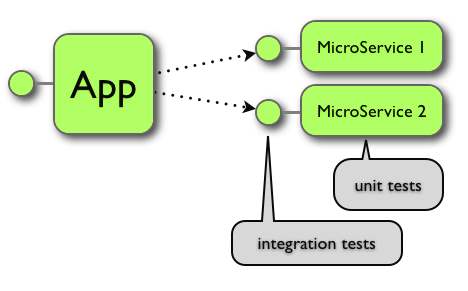Presently, Software is now a great differentiator in almost all industry, ranging from fashion to financial services, as the introduction of technology caused a disruption in global markets.
To be alive, a lot of the largest global companies that are well known are creating serious changes in the pattern they use in developing and delivering software. This new model is known as microservices, a system where they break down big applications into tiny, loosely coupled and composable autonomous chunks, most of the microservices is enhanced by REST APIs, giving an easy way to interact between microservices and transforming the REST API testing world.
Benefits of Microservices:
There are four main benefits of Microservices:
- Agility. Through the breaking down of functionality into tiny parts and abstracting it, development teams are able to concentrate on just carrying out an update on the necessary pieces of the application. And this results in the elimination of a strenuous approach of integration that usually happens with monolithic applications. Processes of development that normally take a longer time can be reduced to just a few weeks.
- Efficiency. An approach that is thoughtful to microservices can lead to a very effective use of code and fundamental infrastructure. Users report really saves cost — sometimes, it reduces the amount of infrastructure that is needed to run an application by 50%. Also it is important to say that the development cycle management also becoming much more effective.
- Resiliency. Functionality spread throughout services has to lead to no failure at any point. This lead to systems that works better with just a little downtime and is able to scale seamlessly on demand.
- Revenue. Swifter iteration and little downtime result in more income. User engagement and retention rise when your product keeps improving.

Microservices as a concept is not new. Amazon, Google, as well as Facebook, have all been carrying out microservices about ten years now. Whenever you are searching for a keyword on Google, it calls out to about 70 microservices before bringing back what you are searching for.
Enterprises made an attempt to replicate using an approach known as “service-oriented-architecture”, this approach failed greatly as a result of the inexistence of the right building blocks for mass adoption.
The three main building blocks needed are currently established, and are now making the gain of microservices useful for everyone:
- Containers. Just like the way containers are bringing about transformation to the shipping industry, software containers have also made a standardization frame for every service. This standardization made simple the thing that was one time a strenuous integration process in a diverse infrastructure world. Docker has prompted a revolution in the way developers all over the world develop any deliver applications with containers.
- REST APIs. The quick use of APIs has made a standardized system for communicating.
- Scalable cloud infrastructure. Private cloud or public cloud infrastructure delivers the required resources on demand to effectively scale and operate services.
IT infrastructure splits just like a cell whenever a new standard of abstraction is adopted worldwide. Each iteration that has been successful has come with a new age of computing where there is a decrease in time to value; there is decreased in development cost, leading to the birth of a new set of large market cap companies.
The LAN brought about the division to client/server; SaaS and Web services were brought about by the internet; virtualization increased the power that is within our data centers, and mobile led to easy access of services from almost anywhere you are.
At every stage, there arose a full landscape of platforms and tools. Microservices is now happening with companies such as Mesosphere, Docker, Nginx and Confluent and they are leading the charge. They are now the leaders by developing the products and services that assist enterprises use this model.
All new changes definitely come with challenges. Adopting microservices require the development team to carry out serious coordination and planning. Precision has to be in place to ensure that there isn’t any form of duplicative services is not created by developers. Quality is essential because a developer has to anticipate the same performance level across services. The connective tissue used for managing flow and access of information across services is essential. The relationships across services in these models are normally very important when compared with the services themselves.

Developers are very serious about this. And they are making use of what helps them best to get the job done. What that means in the innovation environment of today the platforms and tools for microservices. In terms of big companies, many R&D managers and CTOs are saying, “We are now very much faster as a result of Microservices. If we do not carry out innovation as fast as those competing with us, we are going to die.”
The Promise of Microservices:
- Developer autonomy.
- Maintainability.
- Composability.
- Enforces statelessness.
- Ease of Understanding.
- Resilience and stability.
- Performance and scalability.
That all sounds very good, but as I am dealing more and more with microservices I find that their adoption is quite unpredictable, hard and many need to change their mindsets, especially managers.